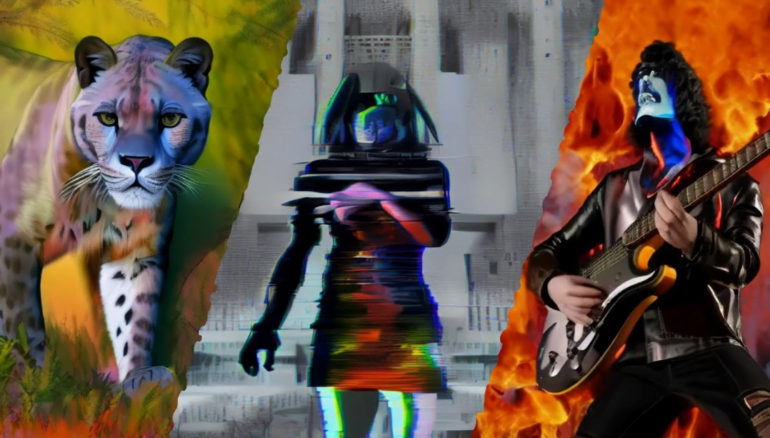TL;DR:
- Zeroscope v2 is an open-source AI model that enables affordable text-to-video services.
- It consists of two key components: Zeroscope V2 for rapid content creation and V2XL for upscaling to high-definition resolution.
- Zeroscope’s manageable requirements make it accessible to a wide user base, utilizing standard graphics cards.
- The model’s training incorporates offset noise, enhancing its understanding of data distribution and generating realistic videos.
- Zeroscope opens doors to personalized gaming, VR, and metaverse experiences, personalized movies, and automated video content creation.
- The model’s lightweight and easily fine-tuned nature make it suitable for researchers and general audiences alike.
Main AI News:
The world of AI has witnessed a groundbreaking development with the release of Zeroscope, an exceptional open-source model designed to revolutionize media and video creation. Developed by China’s Modelscope, Zeroscope brings forth a new era of possibilities by enabling state-of-the-art text-to-video services at a fraction of the cost. With its cutting-edge technology and accessibility, Zeroscope aims to unlock a wide spectrum of AI applications, leaving a profound impact on the business landscape.
To fully grasp the significance of Zeroscope, it is crucial to understand its key components: Zeroscope V2 and Zeroscope V2XL. Zeroscope V2, known for its rapid content creation capabilities, operates at a resolution of 576×320 pixels, allowing users to explore various video concepts effortlessly. Furthermore, with the assistance of Zeroscope V2XL, videos created using ZeroScope V2 can be upscaled to a “high definition” resolution of 1024×576. This dynamic combination empowers users to rapidly generate high-quality videos and unleash their creative potential.
One of the remarkable aspects of Zeroscope is its manageable requirements, thanks to the multi-level model’s 1.7 billion parameters. With a VRAM demand of 7.9 Gigabytes for lower resolutions and 15.3 Gigabytes for higher resolutions, Zeroscope proves to be compatible with a wide range of standard graphic cards. This accessibility enables a broader user base to harness the power of Zeroscope and utilize its capabilities for various purposes.
Zeroscope’s training process incorporates offset noise on nearly 10,000 clips and almost 30,000 frames, resulting in an unconventional approach that unlocks new opportunities for the model. By introducing variations such as random shifts of objects, subtle changes in frame timings, and minor distortions, Zeroscope enhances its understanding of data distribution. Consequently, the model becomes more proficient at generating realistic videos at diverse scales and accurately interpreting nuanced variations in text descriptions. With these remarkable features, Zeroscope is rapidly emerging as a formidable competitor to established commercial text-to-video model providers like Runway.
While text-to-video technology is still a work in progress, it follows a trajectory similar to that of Image AI models. Initially, they faced challenges and exhibited visual shortcomings before attaining photo-realistic quality. Video generation poses additional hurdles as it demands significantly more resources during both the training and generation phases. However, with the advent of Zeroscope as a powerful text-to-video model, the industry is poised for significant digital advancements and novel applications.
Let’s delve into some of the groundbreaking use cases facilitated by Zeroscope:
1. Personalized Gaming, VR, and Metaverse: Zeroscope’s transformative capabilities have the potential to redefine storytelling in video games. Players can now influence cut scenes and gameplay in real-time through their words, enabling unprecedented interaction and personalization. Moreover, game developers can rapidly prototype and visualize game scenes, expediting the development process.
2. Personalized Movies: Zeroscope’s disruptive technology is revolutionizing the media industry by generating personalized content based on user descriptions. Users can input storyline or scene descriptions, and Zeroscope will create custom videos accordingly. This groundbreaking feature facilitates active viewer participation and opens doors for tailored content creation, including personalized video advertisements and user-specific movie scenes.
3. Synthetic Creators: Zeroscope pioneers a new generation of creators who rely on AI to bring their ideas to life. By eliminating technical skill set barriers in video creation, Zeroscope sets a new standard for automated, high-quality video content. The boundaries between human and AI creators blur, expanding the landscape of creativity and fostering innovation.
Zeroscope is an exceptional breakthrough model designed to be easily fine-tuned without requiring specialized resources. This makes it accessible not only to general audiences but also to emerging researchers who may lack the resources of larger labs. By fostering a better understanding of such algorithms and advancing the field at a reasonable cost, Zeroscope paves the way for remarkable progress. Observing how intense competition inspires the creators of Zeroscope to innovate and secure a strong market position is truly inspiring.
Conclusion:
The introduction of Zeroscope v2 as an affordable and accessible text-to-video model has significant implications for the market. It’s open-source nature and manageable requirements democratize the creation of high-quality videos, empowering both general users and researchers. The potential applications in personalized gaming, personalized movies, and automated video content creation open new avenues for business innovation and customer engagement. Zeroscope’s emergence poses a formidable challenge to existing commercial providers, driving competition and inspiring further advancements in the text-to-video market. Businesses should closely monitor the developments of Zeroscope as it reshapes the industry and offers new opportunities for growth and creativity.

